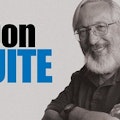Perhaps texting has created a new paradigm, but most engineers would prefer a world where they had to write as little as possible. There are occasional exceptions, though. At most companies, there are financial rewards for writing articles for publication. If you’re looking to advance your career, it doesn’t hurt to have some publications to list in your curriculum vitae. If that sounds interesting, here’s some advice.
First, never contact anybody at a magazine or conference until you’ve talked to your boss and to whoever handles “media relations” inside and outside your company. There could be intellectual property (IP) issues, product timing issues, and ego issues you need to avoid. (This advice goes double for contractors.)
Working with a media-relations professional will simplify your life considerably. This person will handle all the phone calls and e-mails that would otherwise waste your time. Also, you will get advice and help in writing a better article, with fewer revisions and less time wasted overall. For instance, maybe somebody in your company already is writing a similar article. The professional will know about it and help you repurpose your idea.
Also, you must be mindful of what a publication wants out of a contributed article. Primarily, it wants to build and maintain a reputation for providing accurate, authoritative, and up-to-date information about solutions to interesting engineering problems. That helps it sell ads.
That reputation was built on a list of subscribers who asked to have their subscriptions renewed and who asserted that, yes, they did influence the purchase of certain kinds of hardware and software. These days, that reputation also is based on Web metrics, which involve page views, search referrals, unique visitors, and other subtle indices of the content’s popularity.
The point is, publications are looking at your contributed article and measuring how well it delivered on the promise the search engine made when it responded to a potential reader’s needs by presenting your article near the top of a stack of recommendations. That’s a tougher set of criteria than the old approach of counting how many readers re-upped for a new free subscription every year.
With the Web, the article’s potential audience and lifetime are infinite. But you still need to attract that audience. So in writing your article, first think about describing a problem, in terms of where it arises, why it’s hard to avoid, and what the characteristics of a good solution would be. Then you can generally discus possible solutions and the tradeoffs between them. Finally, finish off with your solution and where it fits.
Then it’s time once again to work with the media professional, who will make sure your hard-won insight is expressed clearly, effectively, and eloquently. (There’s much more to editing than running spellcheck!) You wouldn’t go to a job interview without looking your best, and you shouldn’t submit your article to a publication unless it similarly shines. Clean copy makes editors happy—and more inclined to accept your work.
Electronic Design has a long and proud history of publishing contributed material, from the earliest days of our popular Ideas for Design department 60 years ago to the newest members of our roster of Contributing Technical Experts. Of course, we’re eager to see what submissions we’ll receive next. If you keep this advice in mind, perhaps we’ll see your byline in these pages sometime soon too.
About the Author

Don Tuite
Don Tuite (retired) writes about Analog and Power issues for Electronic Design’s magazine and website. He has a BSEE and an M.S in Technical Communication, and has worked for companies in aerospace, broadcasting, test equipment, semiconductors, publishing, and media relations, focusing on developing insights that link technology, business, and communications. Don is also a ham radio operator (NR7X), private pilot, and motorcycle rider, and he’s not half bad on the 5-string banjo.
